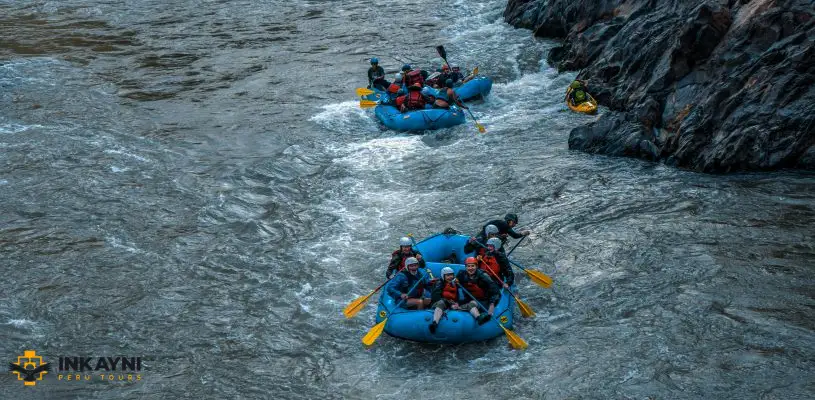Plaza de Armas of Cusco is surrounded by archways constructions. It may sound unbelievable, but many local people don’t know the true origin of the archways that decorate the plaza of this beautiful city. Now, our challenge will be not only to learn the name of the “8 archways of Plaza de Armas of Cusco”, but also the exact location of each one of them. We are pretty sure that behind each name there is a great story to be told and shared with you
Location and altitude:
The Archways of Plaza de Armas are located in the surrounding of Plaza de Armas. They are at an altitude of 3 399 m.a.s.l.
Climate:
Plaza de Armas of Cusco has two distinct seasons: dry and rainy. Dry season is from May to October. Rainy season is from November to April.
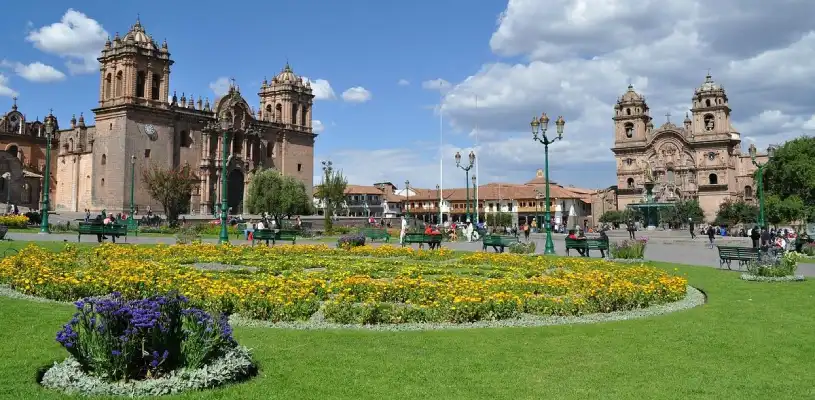
Plaza de Armas of Cusco
History of the “8 archways of Plaza de Armas of Cusco”
When we talk about the archways of Plaza de Armas of Cusco all our attention goes to the memories of these beautiful structures that decorate the main square of Cusco. Probably, many of you who have visited the archways are wondering if you should have spent more time observing them when you had the chance.
Truth is that there are now eight archways, but during the colonial period there were only seven. So, what happened? Let’s let history reveal the mystery:
1.- Meat Archway (Portal de carnes):
This will be the first archway that you will see. It is located on the right of the Cathedral of Cusco. According to some historical facts, it may have been built before the Family Chapel. During the colonial period, it received the name of Archway of the commissioner of the Inquisition. It kept the name until 1895 approximately. After that year it was called Meat Archway or Portal de Carnes.
Note that Plaza de Armas of Cusco served as a market in the past. And it was in this archway that many customers could buy meat. That is the reason of the name this archway received.
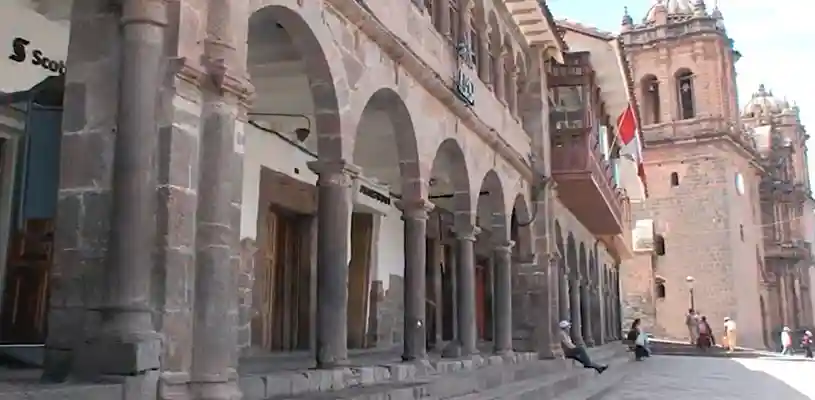
Meat Archway
2.- Archway of Flour (Portal de harinas):
The second archway that you will see is the Archway of Flour or Portal de Harinas. It is named after what locals did there. They sold flour of wheat, corn, peas, chuño and jora (corn). This last one was the main ingredient to prepare the sacred drink of the Incas, the famous “chicha de jora”.
Formerly, this archway was known as Marble Portal of Carbajal. This was because Don Francisco de Carvajal, better known as “the Andes demon”, house was there .
According to history, Don Francisco was part of the army force of Gonzalo Pizarro during the Battle of Jaquijahuana in Anta in 1548. Following the defeat of the battle, Pedro de La Gasca ordered the beheading and dismembering of Don Francisco. Parts of his body were taken to four strategic points at the entrance of Cusco city.
A while after that, the king of Spain ordered to demolish Don Francisco house and as a replacement of it he placed salt and a tombstone with the inscription “crown traitor”.
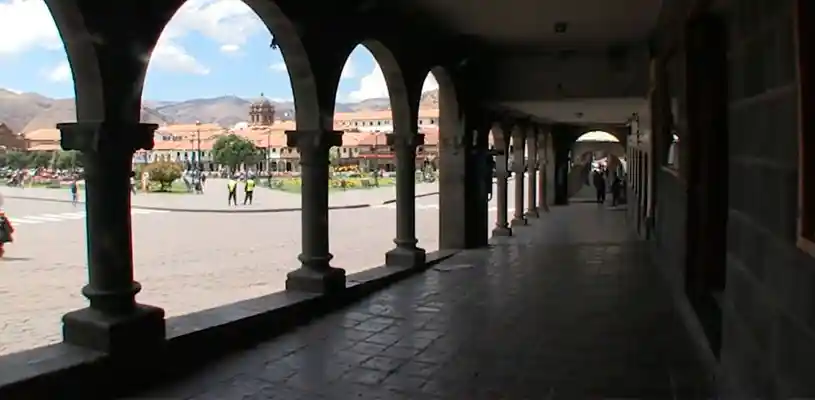
Archway of Flour
Note:
Battle of Jaquijahuana confronted the army force of Gonzalo Pizarro and royalist forces headed by Pedro de la Gasca on April 9, 1548. They fought against each other in order to control the Viceroyalty of Peru during the Great Rebellion of the messengers.
3.- Archway of Bread (Portal de panes)
During the colonial period this archway was known as Kasana and likewise the first 2 archways it was named after what people could do there, buy bread.
It is remarkable that the houses on this archway were built on the Inca Pachacuteq palace, which years later served as Francisco Pizarro’s enemies prison.
Interesting Fact:
Some years later, Bread Archway was named as “Archway of slaps”. It was named that way since Benito Suarez Carbajal slapped Franciscan priest Orriamún for not letting a young woman buy bread. He wanted to make a good impression.
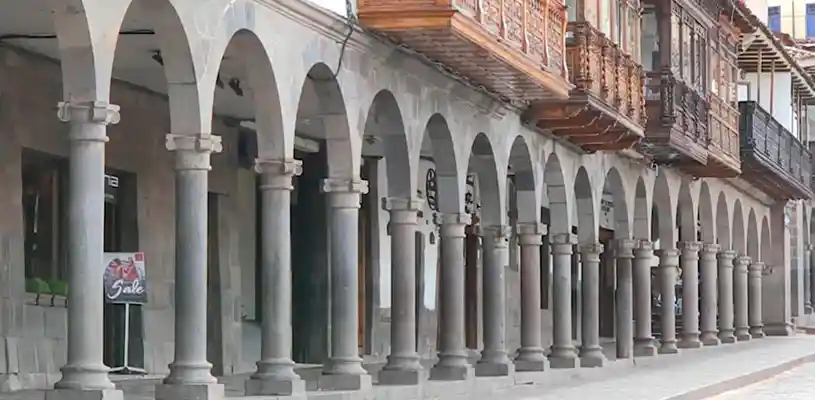
Archway of bread
4.- Archway of Confituria:
When Plaza de Armas of Cusco used to be a market, many merchants tried to find a place to sell their products in the different archways. At the beginning, Confituria archway was called Confedería since many merchants sold meals (fried animal guts) at low cost.
As time went by, it was called Archway of Confituría thanks to a woman of dark complexion who sold delicious nougat nad candies in the interior of the archway. It is said that during the Corpus Christi of Cusco this archway used to be the most visited because of the sweets.
5.- Archway of Commerce:
During the time of emancipation, the place was named as archway of Rag-and-bone men. It changed the name because of the overseas products that were sold by Jewish and Spanish people. Among the products that were sold, you could find handkerchiefs of the finest fabric. They were sold very fast since women of the time loved them.
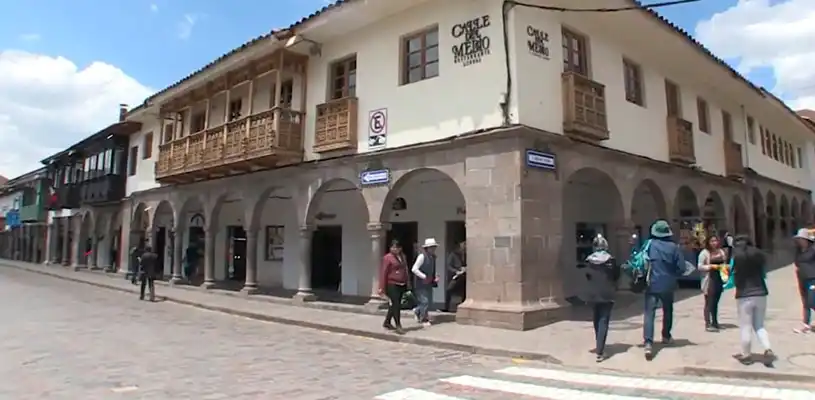
Archway of Commerce
6.- Archway of the Company (Portal de la Compañía):
It was formerly called Archway of the Tailors. But it changed when the Jesuit temple was inaugurated with 50 friars. They settled in the three cloisters of the convent. The construction of this convent was directed by Pietro and Ludovico Maieroni brothers, both architects and Jesuit priests.
Note: A story tells that a great treasure is hidden in the vault of the lower choir.
7.- Archway of the Reeds (Portal of the carrizos)
This is the only archway that keeps its original name. It was named Archway of the Reeds after the selling of reeds and wood that took place in this part of Plaza de Armas of Cusco. The product that was on sale served to built houses and roofs of the old city of Cusco.
Archway of the Reeds is located on the left side of the cathedral. To find it easily, try going to the where “Casa del maestro” (Teacher’s house) is.
 Archway of the Reeds
Archway of the Reeds
8.- Archway of Belen (Portal de Belén):
It was named after the Virgin of Belen, who possesses the title of “Patron of Armas and the city of Cusco”. Many of its devotees agreed the decision taken by bishop Juan Alonzo Bocón.
This archway is located on Triunfo street, next to the Cathedral of Cusco.

Note: To start the tour of the archways that surround Plaza de Armas of Cusco, we should place ourselves on the corner of the street that leads us to Inca Museum.
Best season to visit:
The best season to visit Cusco and the 8 archways that surround the Plaza is during the dry season, from May to October. Why is that? This is because there is less rain and the roads are safer. You will also enjoy the clear, blue sky of Cusco. However, we recommend bringing warm clothes for mornings and nights because they are colder. If you arrive from June to August, you will be able to attend the traditional parties, see colorful streets, and try the delicious typical food.
Inkayni Tips:
- Bring your passport with you all the time.
- Arrive in Cusco during the dry season.
- Wear a hat and sunscreen to prevent from sun damage.
- Take your camera with you.
- You can visit the 8 archway while acclimating to the altitude, before doing any other tour.
- Have some cash with you, preferable local currency.





